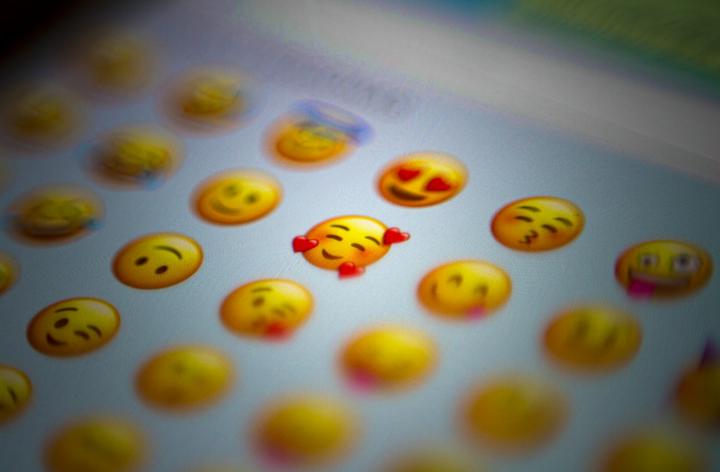
In the Inner House decision of Thomson v James (1855) 18 D. 1, Lord Ivory noted that in the formation of a contract:
both parties must be in agreement as to all conditions essential to the contract; otherwise the one party would have in view one contract, and the other a different one.
A contemporary judgment could present this as follows:
"both 👯 must be in 🤝as to all conditions essential to the 📝; otherwise the 1️⃣ 🎉would have in view 1️⃣📝 and the other a different 1️⃣."
While judges are not yet using 😺 and 😃 in written decisions, courts will have to contend with the increasing use of digital symbols in communications and how these are to be interpreted.
This article will consider how emoji use has evolved, how they have been considered in other common law jurisdictions, and potential difficulties Scottish courts may have in interpreting them.
What is an emoji?
The word "emoji" is an amalgamation of "picture, plus letter or character" in Japanese. The Oxford English Dictionary defines it as "A small digital image or icon used to express an idea, emotion, etc., in electronic communications."
Emojis are commonly used in the communication of a written message from a handheld device. An early device which adopted this was the NTT Docomo's Pocket Bell. This was a pager aimed at Japanese teenagers and from 1995 users could send a 💗symbol.
This feature proved to be very popular and emoji use has grown exponentially since then. While it is difficult to quantify total emoji use worldwide, a study published in May 2020 found that 84% of millennials surveyed in Mexico and Spain reported using them daily. In the month of July 2021, around a fifth of posts on Twitter contained at least one emoji.
Emojis have also gained institutional acceptance as "words". In 2015 the Oxford English Dictionary's Word of the Year was 😂 ("Face with Tears of Joy") in recognition that this was the most popular emoji (20% of all emojis used).
Judicial interpretation of emojis in common law jurisdictions
As emojis are becoming commonly used and accepted as words, courts in Canada, Israel and the USA have attempted to interpret their meaning.
Dahan v Shacharoff, 2017 - Herzliya Small Claims Court, Israel
The claimant was the owner of a property in a northern suburb of Tel Aviv. He advertised the property to rent on a website and it was viewed by a married couple, the defenders. Following the viewing, the couple sent the following WhatsApp message to the property owner:

A rough translation of this is:
Good morning [smiley] Interested in the house [champagne bottle, squirrel, comet]. Just need to discuss the details… When is a good time for you?
After receiving this message, the property owner assumed the couple wanted to rent the property. He removed the advert and turned down other prospective tenants.
The couple ultimately decided against renting the property and the disappointed property owner raised proceedings for loss of rental income.
In its decision, the court concluded that a contract had never been formed between the parties. However, the court also found that the emojis sent by the couple were misleading and the property owner was justified in thinking that they intended to rent the property. In the Israeli courts' view, this constituted a bad faith negotiation, and so the property owner awarded damages of one month rent plus council tax.
While the requirement of good faith is not active in Scots contract law, this case is a useful demonstration of how a court may choose to interpret a series of different emojis. In its decision, the court emphasised that the smiley, champagne and dancing emojis all have positive connotations. In the court's view, these emojis were sufficient for the property owner to presume the couple intended to enter into negotiations to rent the property.
Ohio State v Disabato 2019 WL4165097 (Ohio 2019) (USA)
This was a criminal case where the accused was found guilty of sending threatening and unwanted messages. The court held that by sending 🐀 to the recipient, the accused was threatening them as being a "rat" informer.
Southwest Terminal Limited v Achter Land and Cattle Limited 2023 SKKB116, Kings Bench v Saskachewan, Canada
This case concerned a contract for the purchase of grain.
The details of the contract were messaged by the supplier to the purchaser via WhatsApp. The proposed purchaser responded to the message with 👍. The supplier argued that 👍was an acceptance of the contract. The proposed purchaser's position was that the intent of the emoji was to confirm receipt of the contract, not that it was accepted.
The court held in favour of the supplier. In his judgment, Keen J noted:
It appears that [the proposed purchaser] does not accept [the supplier's] contention that a 👍
means "I agree" or "I accept" or some sort of positive affirmation…this has led the parties to a far flung search for the equivalent of the Rosetta stone in cases from Israel, New York State and some tribunals in Canada, etc. to unearth what a 👍 emoji means.
A starting point is that the 👍 emoji has arrived in the world of dictionary meaning: "it is used to express assent, approval or encouragement in digital communications, especially in western cultures". I am not sure how authoritative that is but this seems to comport with my understanding from my everyday use - even as a latecomer to the world of technology."
Having considered the context of the contract, the court concluded that 👍 clearly signified the defender was accepting the terms.
It also reflected on the impact emojis will have in the future:
Counsel for [the proposed purchaser] remonstrates that allowing a 👍 emoji to signify identity and acceptance would open the floodgates of cases coming forward asking for interpretations of various emojis, for example what does 👊 or 🤝 mean? (…) this court cannot (nor should it) attempt to stop the tide of technology and common usage (…) courts will have to be ready to meet the new challenges that may arise from the use of emojis and the like."
While this judgment signals a willingness of the courts to embrace and interpret emojis, this may pose issues where judges and lawyers lack real-world exposure to them.
Differing interpretations
What are some of the challenges arising from the use of emojis? A starting point is that many emojis do not have as clear a meaning. As the Southwest Terminal case makes clear, even a commonly used emoji like 👍 can be subject to different interpretation.
In Southwest Terminal the court relied upon emoji definitions on the website www.dictionary.com. Definitions within this source demonstrate that emojis can have very different meanings depending on when and how they are used.
For example, www.dictionary.com defines 😭 as "sadness or frustration" or alternatively "laughter of joy". These are starkly different definitions and the intention of the sender of this image can be interpreted very differently by the recipient.
There are also depiction differences between different digital platforms, referred to as "emoji fragmentation".
For example, in 2015 if an Apple user sent the "Beaming Face with Smiling Eyes" emoji, they would send the following: 😬. A recipient on a Samsung device would receive this: 😄.
There are obvious differences in the teeth, eyes and colour in the cheeks between these two images. Once again, the intentions of the sender could be completely at odds with the interpretation of the recipient.
Implications in Scotland
It is well known that "consensus in idem" is key for assessing whether a contract has been formed. In other words, parties have to be in agreement as to the exact terms of a contract. As emojis lack clear, standardised definitions, this poses a clear challenge for the Sheriff Courts and the Court of Session to interpret the meaning of these images.
Some of the factors the court may take into account could include the context of the contract, how the sender has used the emoji in other messages, and the platform they are using.
Are there any other factors the Scottish courts will take into account? ¯\_(ツ)_/¯


